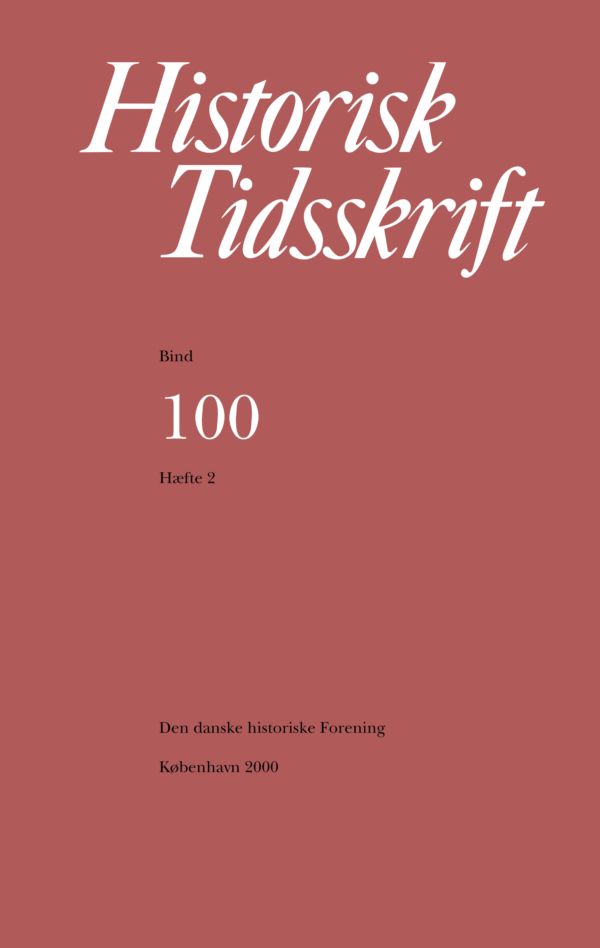Kongelev og krongods
Resumé
Kongelev and Crown LandsSince the middle of the nineteenth century there has been a particular tradition among Danish historians regarding the use of the concepts "the king's domain" and "the crown lands." There is no doubt that Danish historians' view of this matter rests upon the authority of three legal historians and jurists: Johannes Steenstrup (1844-1935), Henning Matzen (1840-1910) and Poul Johannes Jørgensen (1873-1947). Steenstrup defined crown lands (kongelev) as the estates assigned for the sustenance of the king regardless of the succession, as opposed to the royal patrimony, which consisted of the king's inherited property. In the beginning of the nineteenth century historians had discussed the question of the kings' right to the realm and its estates, but Steenstrup reacted forcefully, when the historian Caspar Paludan-Müller (1805-1882) in 1871 ascertained that the registration of crown lands in King Valdemar's Cadastre was merely to be considered as an exercise in handwriting. While Paludan-Müller considered patrimony solely as the king's inheritance, Steenstrup saw it not only as inheritance, but also as private wealth - basing his view on the juridical contradistinction to crown lands (kongelev). Steenstrup's contention is ultimately explained by his own as well as his contemporaries' legal method, which was based on their rationalistic view of natural law and the conceptual jurisprudence of the nineteenth century. Matzen, like Steenstrup, considered the king's and the crown's property rights as an instance of a fixed concept of the right of property. For them the right of inheritance and the right of property flowed from a given legal system; it was assumed to be primordial and universal. Steenstrup's arguments for what he presented as an age-old distinction are, however, demonstrably flawed by distortions suited to supporting his conclusions, for it can be clearly shown that the distinction between the king's and the crown's property does not go back to the twelfth century. The nineteenth century's legal concept of the right of property is not a concept found in the Middle Ages, where no distinction was made between property rights and possession.Conclusions based on the premise that the king or the crown owned all the estates of the realm are therefore misconceptions, however persistently they occur in presentday Danish historical writings. In some of this literature regal rights are also endowed with great age, whereas they first appear in a European context at the Diet of Roncalia in 1158. Finally, the concept of crown lands presupposes the legal phenomenon of a juridical or fictitious person, a concept developed in Canon Law on the basis of Roman Law and accepted only much later by secular jurists. There is therefore no reason to equate the list of kongelev in Valdemar's Cadastre (the word itself is found in no other source) with crown lands. The basis for the distinction between crown lands and patrimony is thereby dissolved. Whatever the meaning of kongelev, it cannot be decided philologically. The question remains moot, but legal definitions of the nineteenth century are no help in understanding Mediaeval legal concepts: Le conformisme commence á la definition. Translated by Michael WolfeDownloads
Publiceret
Citation/Eksport
Nummer
Sektion
Licens
Ophavsret til bidrag i Historisk Tidsskrift tilhører forfatterne og Den danske historiske Forening som udgiver af Historisk Tidsskrift. For illustrationer gælder den ophavsret, som står anført i billedteksten. Ophavsretslovens almindelige bestemmelser gælder, hvilket vil sige, at ophavsretten gælder i 70 år efter forfatterens død. Bidrag i Historisk Tidsskrift må derfor, med forbehold for en ”moving wall” på tre år, frit downloades, læses, gemmes, anvendes og citeres (med kildeangivelse) i privat og videnskabelig sammenhæng, men de må ikke helt eller delvis genudgives af tredjepart, heller ikke i redigeret form, uden tilladelse fra forfatterne og Den danske historiske Forening. Henvendelse skal i så fald rettes til Historisk Tidsskrifts redaktion på histtid@hum.ku.dk.





